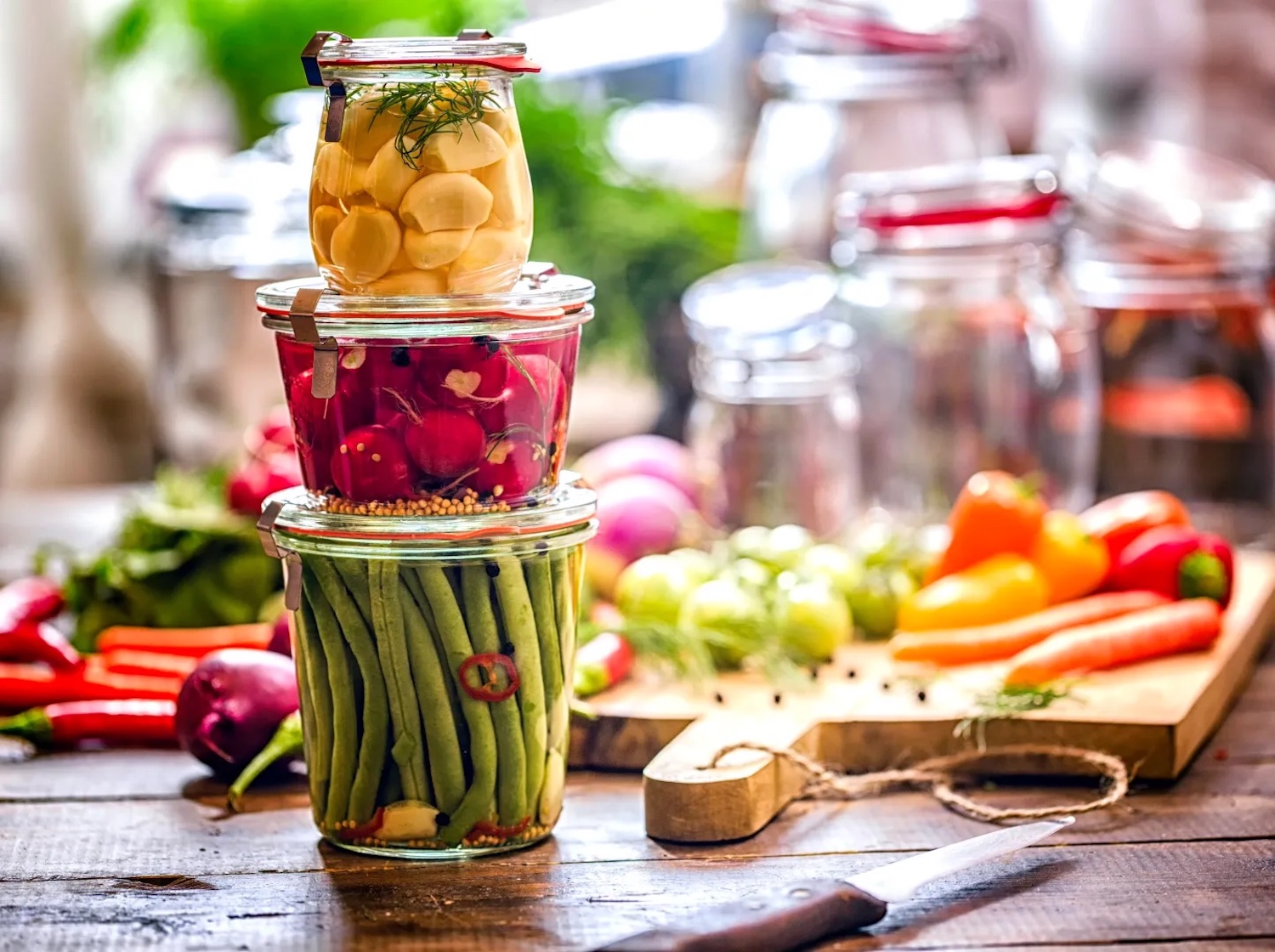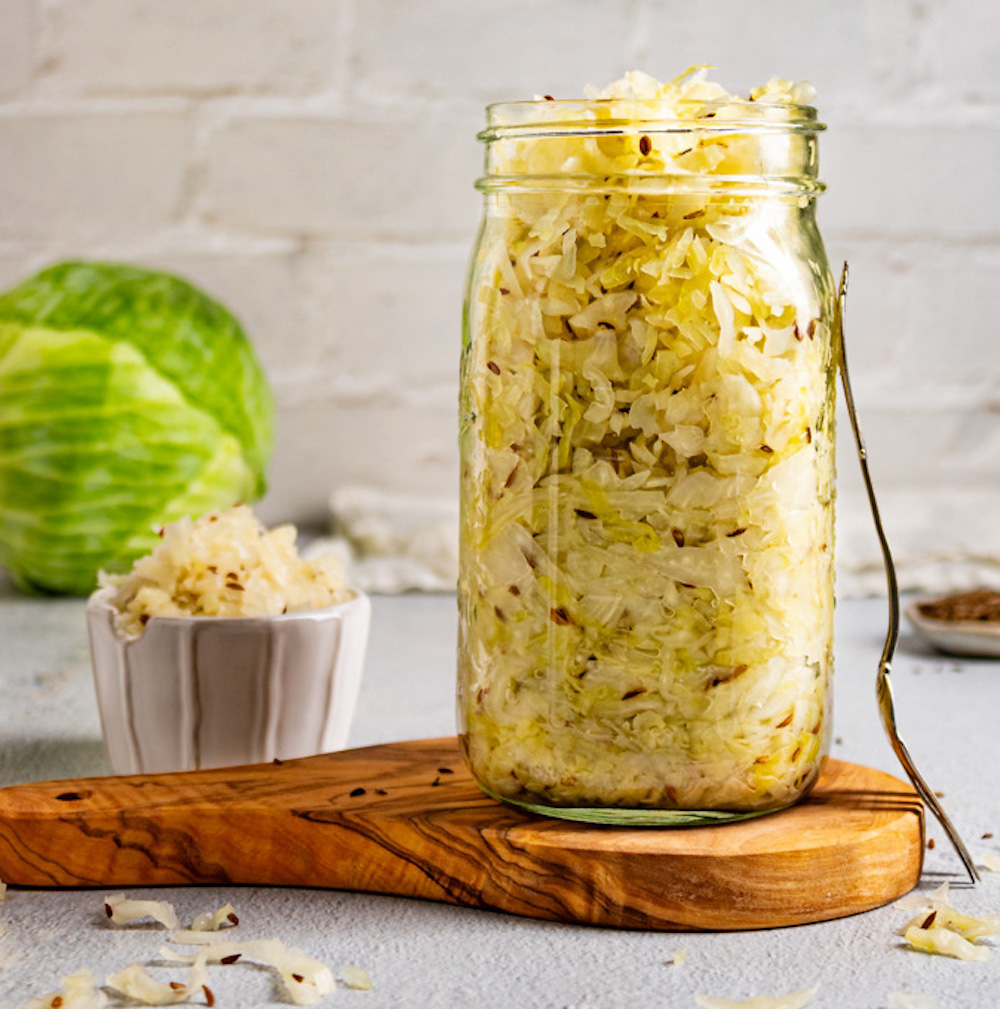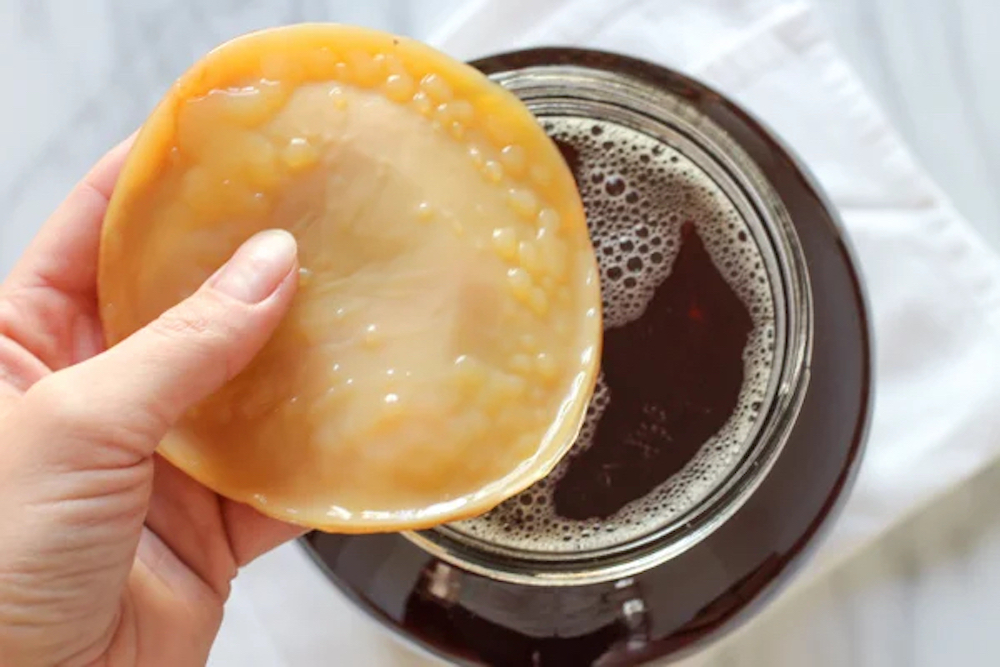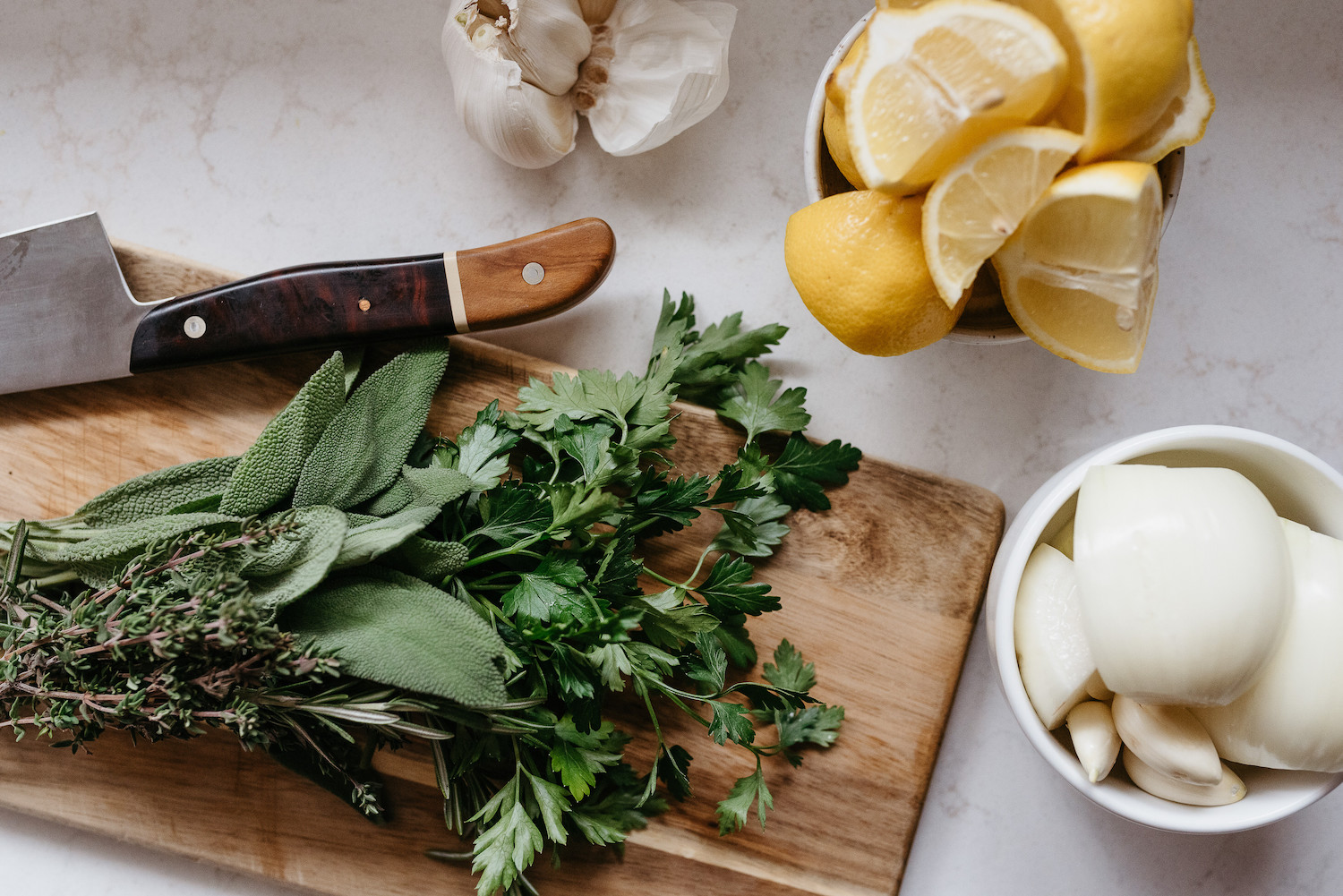
Can fermented foods help to balance midlife hormones?
One of the many ways Gen Xers and early Millennials are redefining the menopause experience is with food — specifically hormone-balancing foods. Whether it’s high-protein diets, intermittent fasting, or phytoestrogen foods, we’re exploring different ways to manage troublesome symptoms through what we eat. And now, the spotlight shines on a food preservation method that has supported gut and hormone health for centuries. Step forward, fermented foods.
What are fermented foods?
In regions all over the world, fermentation is a traditional way of preserving food to improve its shelf life and enhance taste and digestibility. There are several different ways to do this:
Dry brining: Sauerkraut is a classic example of dry brining. Cabbage (or other vegetables) is massaged with salt until a natural brine forms. The mixture is packed in a jar and left to ferment.
Wet brining: Vegetables are stored in salt water to ferment.
Using a SCOBY (Symbiotic Culture Of Bacteria and Yeast): Sourdough bread, apple cider vinegar, kefir, and kombucha tea are good examples of fermented foods that use a SCOBY. Also called a “mother,” the SCOBY is transferred from one batch of food to another and produces baby SCOBYs along the way (hence the name, mother).
The earliest evidence of fermented food production comes from archaeological remains in Asia dating back to 8000 B.C. It’s a time-honored tradition that’s back in the spotlight now as an easy, low-cost way of making healthy food that supports the gut microbiome.
Research into the gut microbiome is flourishing, and we now know about the connections between gut bugs and mental health, inflammatory diseases, autoimmunity, and hormone balance. So, what does this mean for MidstHers juggling peri/menopause?

3 benefits of fermented foods for hormone health
With peri/menopausal symptoms like anxiety, depression, weight gain, and inflammation all linked to the health of our gut bacteria, it makes sense to nurture these microbes as much as possible.
Fermented foods are great for:
1. “Topping up” your gut microbiome
Natural bacteria in fermented foods strengthen the number and diversity of microbes in your gut. Research shows that microbial diversity in the microbiome drops during menopause, so topping it up with natural food species may help offset this.
2. Hormone detoxification
There’s a subset of gut bacteria called the estrobolome that metabolizes old estrogen, putting some of it back into circulation to the liver. Too much recycling can exacerbate estrogen dominance in perimenopause, but too little is unhelpful, too. As ever, there’s a balance to be had, and general microbiome support can keep the estrobolome happy.
3. Easing peri/menopausal digestive problems like irritable bowel syndrome
Species of bacteria in fermented foods such as Lactobacillus bulgaricus, Lactobacillus thermophilus, and Bifidobacterium are known to improve symptoms of pain and bloating associated with irritable bowel syndrome. Fermented foods provide natural bacteria alongside digestible fiber, which also helps ease bloating.

How to make fermented foods
Homemade ferments are easy to make with minimal equipment (a large jar, sharp knife, strong chopping board, and big mixing bowl).
Crucially, though, kitchen hygiene is super important. Always wash your hands thoroughly before you start, and give all equipment a good wash in hot soapy water. Fermentation is essentially a managed form of decay, and you don’t want to add any potentially harmful microbes to the process.
One of the easiest ferments for beginners to try is sauerkraut. Here’s the basic recipe:
How to ferment sauerkraut
Approximately 800g–1kg (about 2 pounds) of cabbage will fit into a 1.5-litre jar. Use a 2% ratio of good quality sea salt — 16g for 800g of cabbage.
Choose a red or white cabbage, organic if possible. Wash it and remove any damaged or aging outer leaves. Slice it in half and remove the core — save this bit for later.
Grate or finely slice the cabbage and put it in a large bowl or rectangular cooking tin with deep sides. Add the salt and massage it into the cabbage with your hands. (Wear thin rubber gloves if you have dry or sensitive skin).
Continue massaging the cabbage until there is a fair amount of water in the bottom of the container.
Transfer the cabbage to your clean fermentation jar and pack it tightly so the water rises to the top with no hidden air pockets or bubbles. If you need to, use the core of the cabbage as a plunger to keep the grated mixture under the water. You don’t want any bits of cabbage sticking out, so the motto here is: “If it’s under the brine, it’s fine!”
Leave a gap of around two inches between the surface of the water and the lid of the jar to allow space for gasses to accumulate.
Close the lid tightly and let the mixture ferment at room temperature for 10–15 days. Check the jar daily to ensure the cabbage is still submerged in brine and to “burp” the gasses. After 10–15 days, taste and see what you think. Want a more sharp, sour flavor? Leave it for another day or two, then check again. Once you’re happy with the taste, put the jar in the fridge. The cold temperature puts a stop to any further fermentation.
Remember to burp — seriously!
Fermentation is an anaerobic process requiring an airless environment, which is why the lids have to be properly sealed. However, as the bacteria get to work digesting the carbohydrates in the cabbage, they release a lot of carbon dioxide. Specialist fermentation jars are designed to let this out, but if you’re using regular jars, you need to “burp” them once a day to prevent a potentially explosive gas build-up. Quickly unscrew the lid to let the gas out, then close it tight again.

Get experimental
Each batch of fermented food will taste slightly different, and you can alter this even further by adding fruit, herbs, and spices. Play around with these flavor combinations to come up with your own recipes:
- Flavor traditional cabbage sauerkraut with juniper berries, cumin seeds, turmeric, or caraway seeds.
- Mix cabbage with carrot, beetroot, fennel, celery, or apple for a twist on the traditional sauerkraut.
- Add raspberries, fresh ginger, or lemon to water or coconut water kefir.
- Flavor plain kombucha with elderflower and lemon, grapefruit, or orange juice.
New to fermenting? Take it slowly
If you’re new to fermented foods, have sensitive digestion, or regularly experience wind and bloating, go easy with your new ferments. Introducing more live bacteria to your gut can sometimes cause a mild bout of gas, bloating, and increased bowel regularity.
Think of it like new guests arriving at an already busy house party — things get a little noisier, and everyone has to shuffle around to make space. The symptoms usually settle in a few days once your gut becomes accustomed to the new bugs.
In the meantime, stick with small servings of fermented foods (e.g., a teaspoon of sauerkraut or a small glass of kefir) and have a couple of ferment-free days each week. Over time, your digestion will get used to handling new intakes of bacteria, and you can increase the serving size.

Treat your SCOBY like a cute pet
Maintaining a SCOBY or kefir grains is a bit like looking after a Tamagotchi (remember those?). Sauerkraut and brine-fermented pickles can be made as and when you want them, but kefir grains and the SCOBYs used in sourdough and kombucha need regular feeding to keep the cultures alive. If you’re going away for more than a week, give your kefir grains or SCOBY to a friend or neighbour to look after. They may well give you a crazy stare, but at least you’ll have a live culture to come home to.




